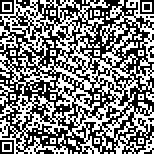| 摘要: |
| [摘要] 目的 分析在肾移植免疫诱导治疗中联合使用巴利昔单抗和小剂量抗人T细胞兔免疫球蛋白(ATG-F)的安全性和有效性。方法 回顾分析2014-01-01~2014-12-31在该院首次行同种异体肾移植术受者的临床资料以联合使用巴利昔单抗和ATG-F免疫诱导治疗的受者作为观察组,其对侧供肾受者且接受ATG-F单诱导者作为对照组,两组均采用他克莫司(FK-506)+霉酚酸酯+美卓乐三联维持治疗,共14对患者入组观察。对比两组患者术后1年内移植肾功能延迟恢复(DGF)、急性排斥反应(AR)、肺部感染和继发性糖尿病的发生率,以及肾功能、血FK-506谷浓度的差异。结果 两组术后1年内均无移植肾失功及死亡患者。观察组和对照组的AR的发生率分别为14.29%(2/14)、7.14%(1/14),DGF的发生率分别为14.29%(2/14)、14.29%(2/14),观察组未出现继发性糖尿病,对照组出现1例,差异均无统计学意义(P>0.05)。观察组术后1年内肺部感染的发生率为14.29%(2/14),对照组为21.43%(3/14),差异无统计学意义(P>0.05)。观察组FK-506谷浓度在术后第3个月、6个月、9个月显著低于对照组(P<0.05)。结论 巴利昔单抗联合ATG-F的免疫诱导方案能有效预防肾移植术后排斥反应,不增加感染性并发症的发生率,同时可减少早期肾移植患者体内钙调神经蛋白抑制剂(CNIs)类药物的暴露量。 |
| 关键词: 肾移植 巴利昔单抗 抗人T细胞兔免疫球蛋白 他克莫司 排斥 |
| DOI:10.3969/j.issn.1674-3806.2019.10.03 |
| 分类号:R 699.2 |
| 基金项目:广东省自然科学基金项目(编号:2016A030313566) |
|
| Application of basiliximab combined with ATG-Fresenius as induction therapy in renal transplant patients |
|
LIN Fen-wang, YU Li-xin, ZHOU Min-jie, et al.
|
|
Department of Organ Transplantation, Nanfang Hospital, Southern Medical University, Guangzhou 510515, China
|
| Abstract: |
| [Abstract] Objective To evaluate the efficacy and safety of basiliximab combined with anti-T-lymphocyte globulin-Fresenius(ATG-F) as immunity induction of renal transplantation. Methods The clinical data of the patients who received the first kidney transplantation in Nanfang Hospital from January 1, 2014 to December 31, 2014 were retrospectively analyzed. The recipients receiving basiliximab combined with ATG-F induction were included as the observation group, and the recipients of contralateral donor kidney receiving single ATG-F induction were included as the control group. Fourteen pairs of the patients were included in the two groups and all the patients underwent the triple maintenance therapy of immunosuppression(tacrolimus+mycophenolate mofetil+Medral). The differences in the incidence rates of delayed renal function recovery(DGF), acute rejection(AR), pulmonary infection and secondary diabetes, renal function and the trough value of tacrolimus(FK-506) in blood within 1 year after kidney transplantation were compared between the two groups. Results There were no graft loss and death cases in both groups during the first year after renal transplantation. The incidence rates of AR and DGF in the observation group and the control group were [14.29%(2/14) vs 7.14%(1/14)] and [14.29%(2/14) vs 14.29%(2/14)] respectively. There were no secondary diabetes in the observation group and 1 case in the control group, with no significant difference between the two groups(P>0.05). There was no significant difference in the incidence of pulmonary infection within 1 year after kidney transplantation between the observation group(14.29%) and the control group(21.43%)(P>0.05). The trough value of FK-506 in the observation group was significantly lower than that in the control group on the 3rd, 6th and 9th month after operation(P<0.05). Conclusion Basiliximab combined with ATG-F induction can effectively prevent rejection after renal transplantion without increasing the incidence of infectious complications, and reduce the exposure of calcineurin inhibitors(CNIs) drugs in early renal transpation patients. |
| Key words: Kidney transplantation Basiliximab Anti-T-lymphocyte globulin-Fresenius(ATG-F) Tacrolimus Rejection |

